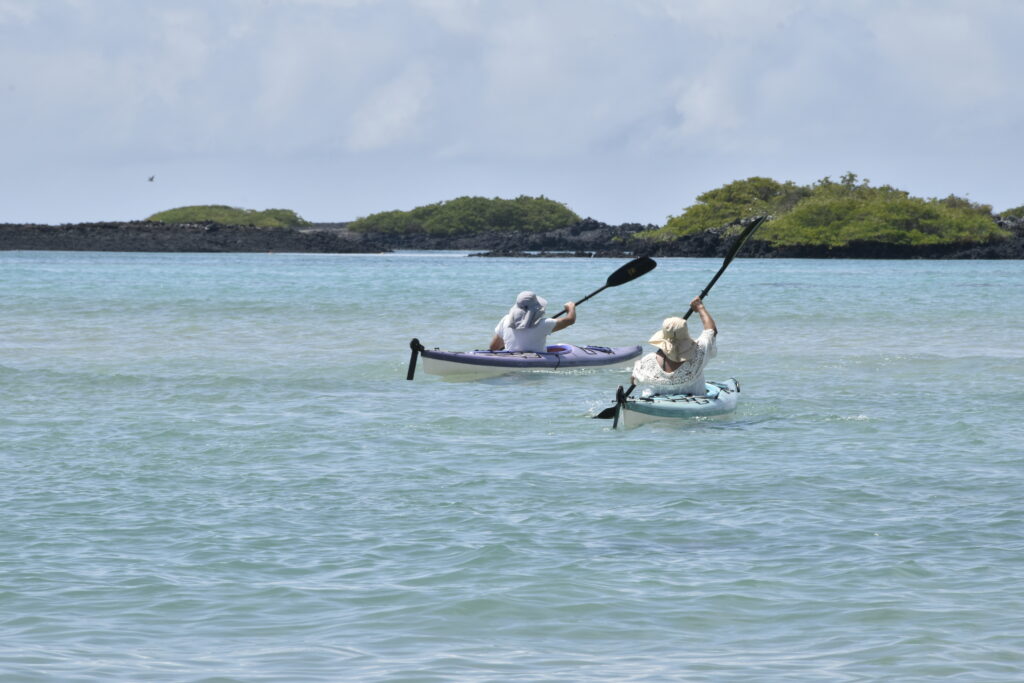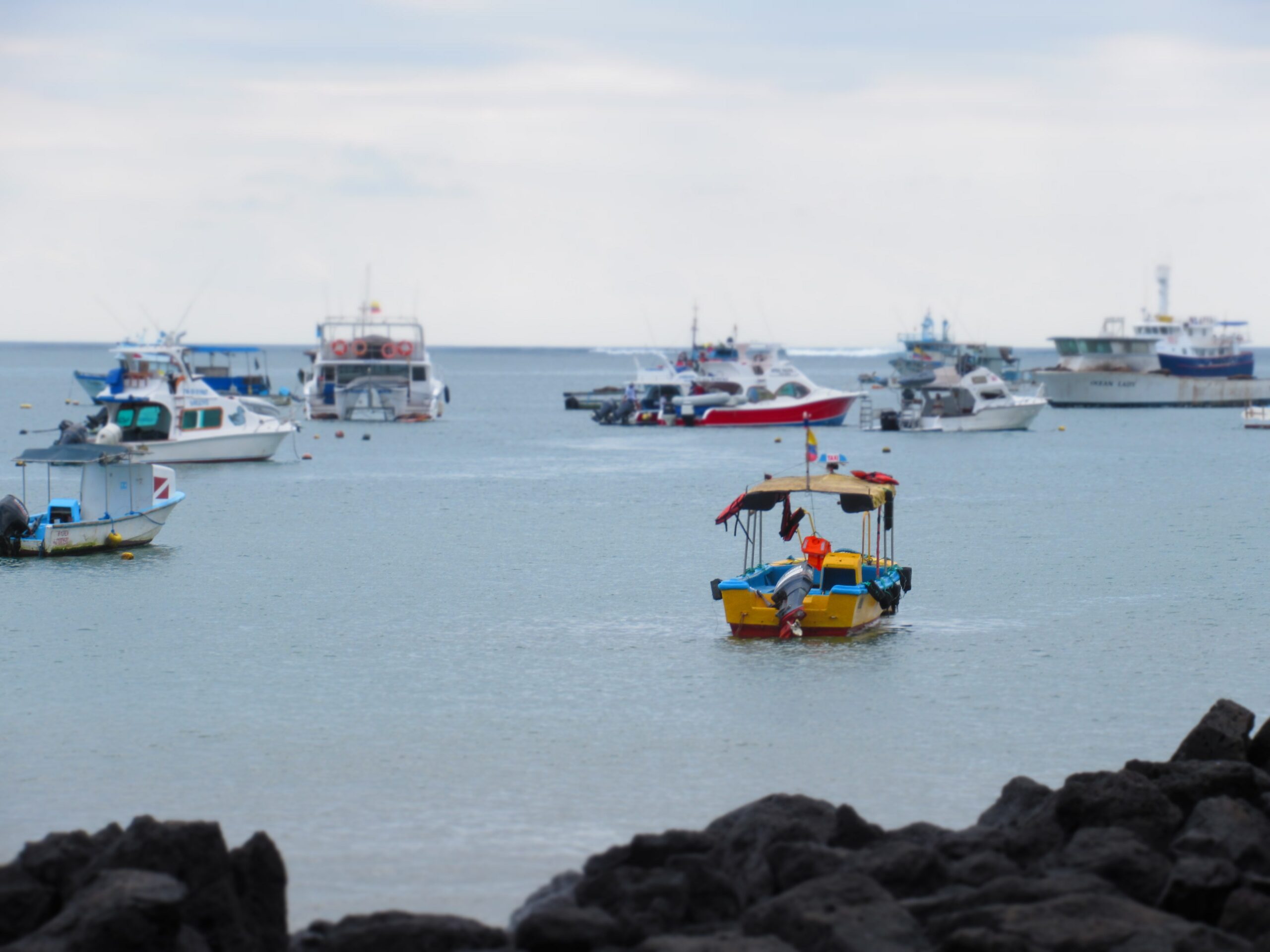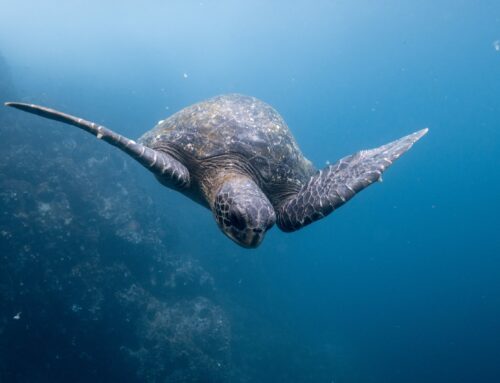There’s a lot of talk about sustainability in the world of tourism, but before we can implement a more responsible industry, first we must understand exactly what it is. Sustainable tourism is a complex concept which not only covers economic, social and environmental issues but which varies greatly depending on the location within which it is practised. Whether you’re a hotel, tour provider or restaurant, in this article, we outline how the idea of sustainable tourism in the Galapagos Islands might help your business to reduce its environmental and social impacts.
What is sustainable (or responsible) tourism?
According to the Global Sustainable Tourism Council (GSTC), sustainable tourism:
“refers to sustainable practices in and by the tourism industry. It is an aspiration to acknowledge all impacts of tourism, both positive and negative. It aims to minimize the negative impacts and maximize the positive ones.”
Meanwhile the UN World Tourism Organization states that it is:
“tourism that takes full account of its current and future economic, social and environmental impacts, addressing the needs of visitors, the industry, the environment and host communities.”
Not the same as ecotourism (which refers to niche segment of tourism in natural areas), sustainable tourism then, refers to the operations of the tourism industry as a whole (hotels, tour operators, restaurants etc.) and its potential to preserve and protect people, animals and the planet into the future.

Sustainable tourism across the world
However, sustainable tourism can mean something entirely different in different locations. Take the example of the tourism industry in Mumbai, India compared to the industry in the Galapagos Islands.
Mumbai
In Mumbai, due to the poverty experienced by a large percentage of the city’s residents, the number of carbon emitting vehicles on the road and high levels of waste and pollution, amongst other things, a sustainable tourism company might decide to:
- Purchase from local suppliers to support local communities
- Partner with NGOs working to relieve poverty
- Use electric vehicles to contribute to better air quality
- Implement a reuse, recycle program
The Galapagos Islands
In the Galapagos Islands, where for example, issues might centre around diminishing biodiversity, environmental degredation and plastic waste, a sustainable tourism company might do things a little differently. They could:
- Implement a zero-waste policy
- Encourage the use of sailing boats over speed boats
- Train staff to know about the dos and don’ts of wildlife interactions and national park visits
So what does this mean?
There is no ‘one size fits all’ when it comes to sustainable tourism! Whilst tourism operators should look to ‘sustainable tourism’ as a useful concept, the context within which it is practised should have a significant impact on the initiatives introduced.
For example, if a hotel is interested in improving its sustainable operations, there is no point putting all of its energy into growing fresh organic vegetables if these are responsibly grown and readily available in your region. Much better to focus your time on something that can contribute to a better world and society.

Tourism related issues in the Galapagos Islands
In the Galapagos Islands, sustainable – or responsible – tourism can be a helpful concept for businesses and operators looking to contribute more positively to local communities and the environment. But first, it’s important for operators to know more about some of the issues which face the islands, their animals and communities. The following outlines only some of the tourism related issues in the Galapagos Islands.
Strain on resources
The number of people both living and visiting the Galapagos Islands has increased over the years. Tourism has grown from 40,000 visitors per year in 1990 to over 200,000 today. Meanwhile, the resident population has grown from 15,000 people in 1998 to over 25,000 today. With more people, has come a strain on resources. In general, a large number of visitors can result in a strain on resources and in general more waste and carbon emissions.
Energy
The more people living on the Galapagos Islands, the higher the demand for power. Typically, energy on the islands is created using diesel generators which power communities across the archipelago. The diesel, which is funded by the Ecuadorian government, has become a norm for local people. Small tankers are responsible for transportation of the fuel from the mainland of Ecuador. Around six million tonnes is transported per year (with thirty percent of this used for electricity generation). Unfortunately, oil spills are possible during transportation and this has occurred in the past, resulting in the harming of wildlife.
Water
As a collection of somewhat small islands, the Galapagos Islands in some cases (Floreana and Isabela) imports its drinking water. This is of course an unsustainable method of water usage. Meanwhile, a heavy reliance on rainwater means that during droughts and high visitation, resources can run low and more drinking water must be imported.
Waste materials
Increasing visitors and residents in the Galapagos Islands also means more waste. In Santa Cruz, the amount of waste produced is ten tonnes per day. Unfortunately, due to a skill shortage in this area, and due to a lack of formal landfill sites, rubbish often flows into the seas, is dumped or burned (which results in poisonous fumes). All of these result in negative health impacts for both humans and wildlife.
Food
Due to the size of the island and restrictions on fishing and growing crops, the Galapagos Islands also imports much of its food from the mainland. Around 1,100 crates of food and drink a day are sent to the islands. Using a great deal of energy, this importing method is in many ways unsustainable.
In addition to this, overfishing is a huge problem in the region. Not only due to large fishing vessels, overfishing has been exacerbated by illegal small scale fishing. Restrictions put in place currently exist to protect levels of fish in the sea and to protect local marine life. Unfortunately, illegal fishing bypasses these restrictions.
People
It can be difficult to make a living on the Galapagos Islands from farming and fishing, with various restrictions (for the sake of the environment) stopping young people from choosing it as a career choice. Many families on the islands who rely on these practices for their income experience financial difficulties.
Did you also know that typically, “for every US$100 spent on a tour holiday by a tourist, only around US$5 actually stays in a developing-country destination’s economy” – United Nations Environmental Programme (UNEP)? With many tours available in the Galapagos from different companies, there is plenty of potential for leakage which results in a lessened positive financial impact for the islands.
Nature and biodiversity
The Galápagos Islands National Park was one of the first to be inscribed on UNESCO’s World Heritage List in 1978. With its diverse and endemic species, it became a destination for those wanting to see some of the most unique creatures in the world. In 2007, the Galapagos Islands was put on UNESCO’s “red list” of endangered sites, with concerns about booming population and tourism, overfishing and the introduction of invasive species.

What does sustainable tourism in the Galapagos Islands look like?
Understanding the most pressing matters at hand in the Galapagos Islands, tourism operators can begin to operate using sustainable initiatives. In accordance with the above, the following ideas could help a tourism business in the Galapagos to reduce negative impacts and increase positive ones:
Installing solar panels…. or investing in renewable energy to reduce the amount of diesel required to power the island.
Capturing rainwater…. can help to reduce the amount of water required for shipping from the mainland.
Reducing single-use plastic…. will result in less waste and less need to burn it.
Taking part in recycling initiatives… by researching what is possible in your area and getting involved.
Growing some of your own food…. to reduce the amount needed from the mainland. Every little helps!
Using local suppliers…. and supporting local producers and companies, rather than opting for mainland or international options.
Following all national park rules… to ensure that your business is doing no harm to the environment and its wildlife.

Sustainable accommodation at Chez Manany Galapagos Ecolodge
Chez Manany invites you to enjoy a responsible vacation on Isabela Island in the Galapagos archipelago. The ecolodge was designed following sustainable principles such as: the use of organic materials, zero-waste management, support local craftsmen, use of renewable energy, water treatment management, organic garden and more.
At Chez Manany, a commitment to sustainability is as central to our business as your comfort and enjoyment!
To book your room with us, click here.








